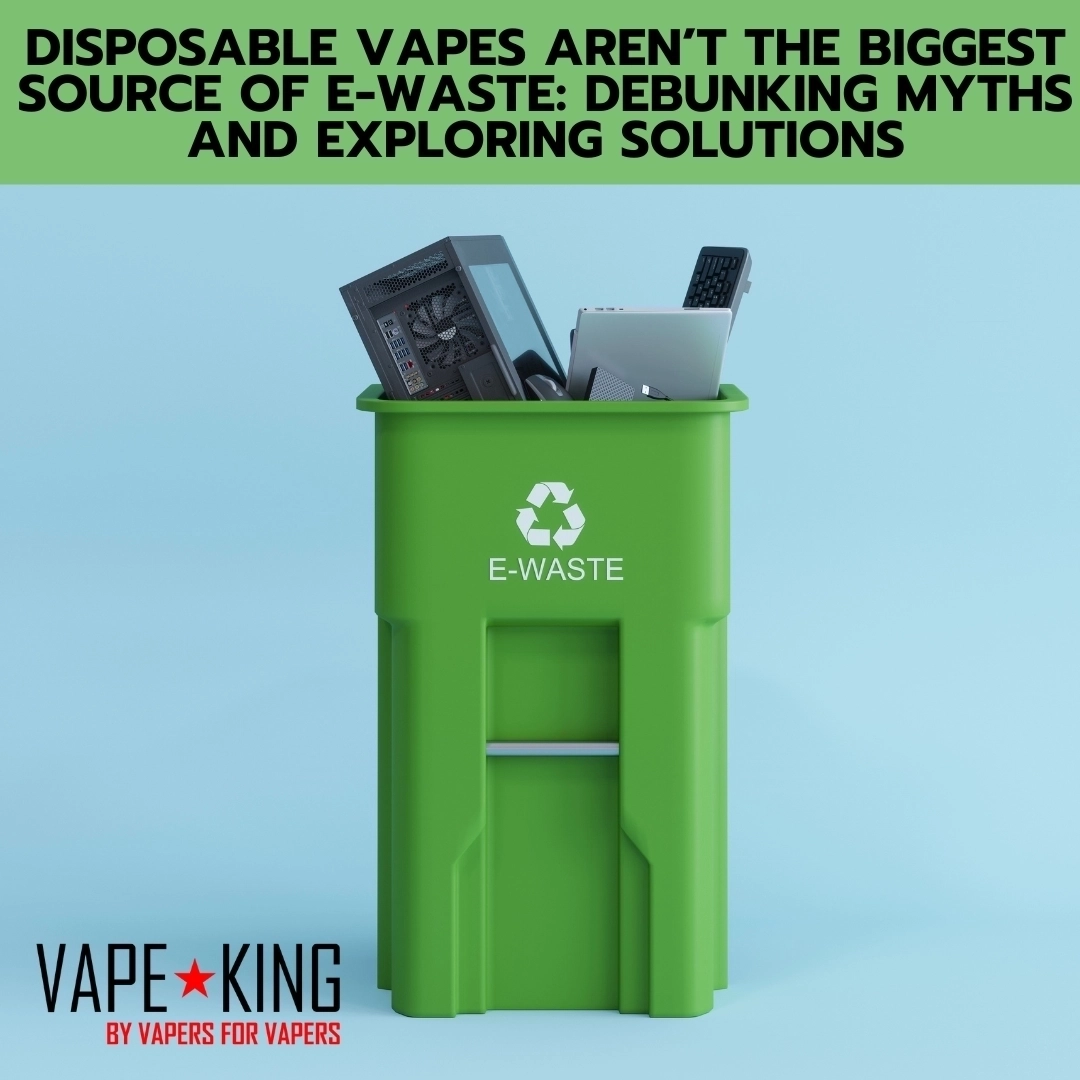Free Shipping on orders R1000 or more!
Disposable Vapes Aren’t The Biggest Source of E-Waste: Debunking Myths and Exploring Solutions

In recent years, concerns about electronic waste, or e-waste, have grown as our dependence on electronic devices continues to rise. One area that often comes under scrutiny is disposable vapes. While it's true that these products contribute to e-waste, they might not be the primary culprits. In this blog post, we'll delve into the world of disposable vapes, explore the larger e-waste landscape, and discuss potential solutions.
Understanding Disposable Vapes:
Disposable vapes have gained popularity for their convenience and ease of use. However, critics argue that their single-use nature makes them significant contributors to e-waste. These devices typically consist of a battery, heating element, and a cartridge containing e-liquid. Once the e-liquid is depleted or the battery runs out, the entire device is discarded.
The Bigger Picture of E-Waste:
While disposable vapes undoubtedly add to the e-waste stream, it's essential to put their impact into perspective. Larger electronic devices such as smartphones, laptops, and tablets account for a substantial portion of e-waste globally. The rapid turnover of these devices, driven by technological advancements and consumer trends, contributes significantly to the e-waste challenge.
Statistics on E-Waste:
- According to a report by the Global E-Waste Monitor, approximately 53.6 million metric tons of electronic waste was generated globally in 2019. Small IT equipment, including mobile phones and personal computers, accounted for the largest share (44%), while large equipment and temperature exchange equipment represented 22% and 21%, respectively.
- In contrast, disposable vapes, while a growing concern, make up a smaller fraction of the overall e-waste stream. Understanding these proportions is crucial for adopting targeted strategies to tackle the diverse sources of electronic waste.
Challenges and Opportunities:
- Addressing the e-waste issue requires a multi-faceted approach. Here are some challenges and opportunities to consider:
- Design for Sustainability: Manufacturers should prioritize designing products with recyclability and longevity in mind. This includes creating devices with easily replaceable parts and incorporating materials that are environmentally friendly.
- Consumer Education: Raising awareness among consumers about responsible disposal methods is vital. Many individuals may not be aware of how to recycle or dispose of electronic devices properly.
- Extended Producer Responsibility (EPR): Governments and regulatory bodies can enforce EPR policies, holding manufacturers responsible for the entire lifecycle of their products. This encourages companies to design products with end-of-life considerations.
- Innovation in Recycling Technologies: Investing in research and development of recycling technologies for electronic components is essential. This includes finding ways to efficiently recover valuable materials from electronic devices.
Conclusion:
While disposable vapes contribute to the growing issue of e-waste, they are not the sole or primary source. The broader landscape of electronic devices, especially larger and more frequently replaced items, plays a significant role in the e-waste challenge.
As consumers, manufacturers, and policymakers, our collective responsibility is to address e-waste comprehensively. This involves sustainable product design, responsible consumer behavior, and supportive policies that encourage a circular economy for electronics. By understanding the true scope of the e-waste issue, we can work towards effective solutions that benefit both our technological advancements and the health of our planet.
No posts found
Write a review

